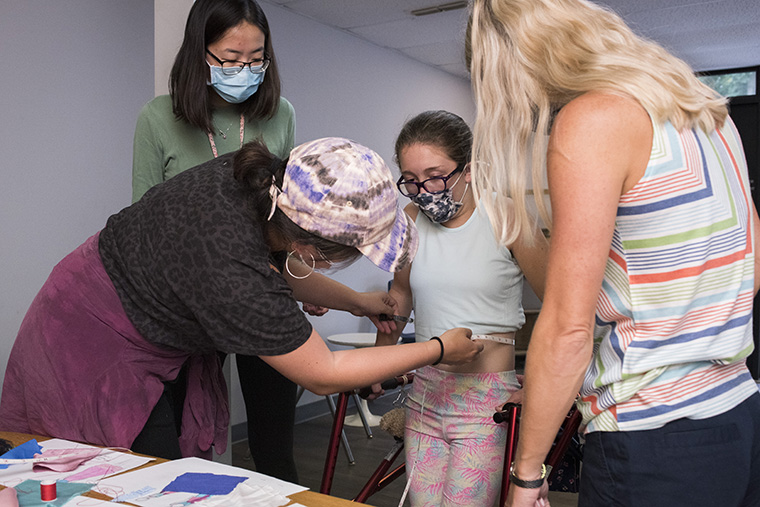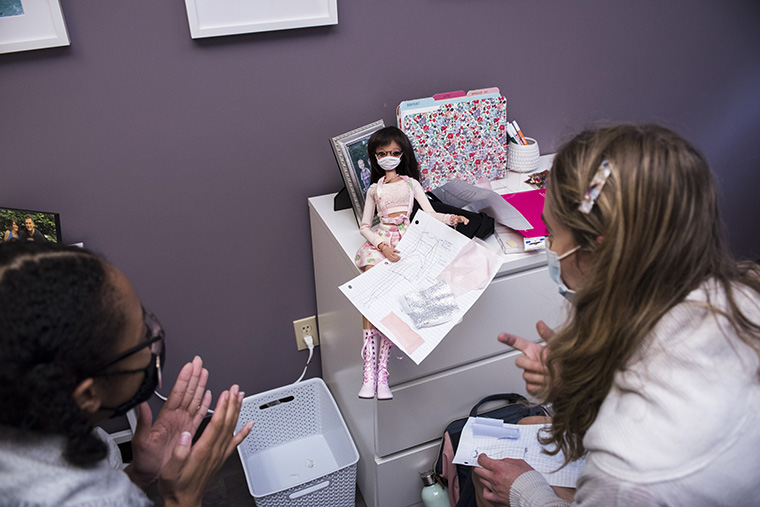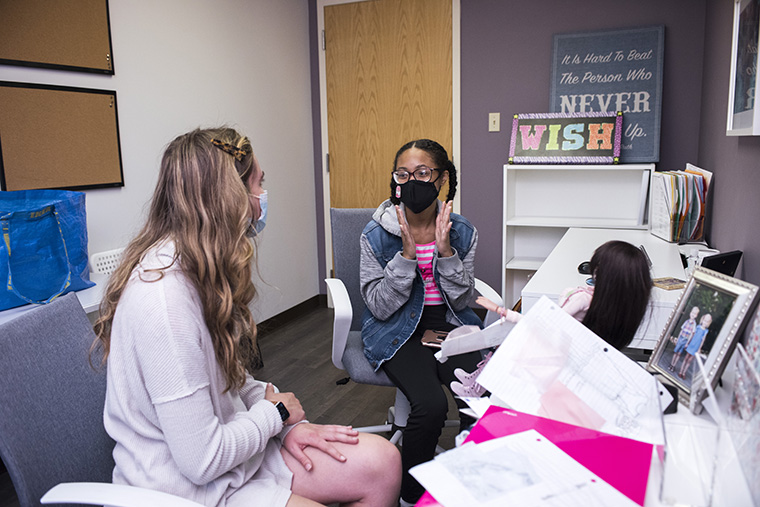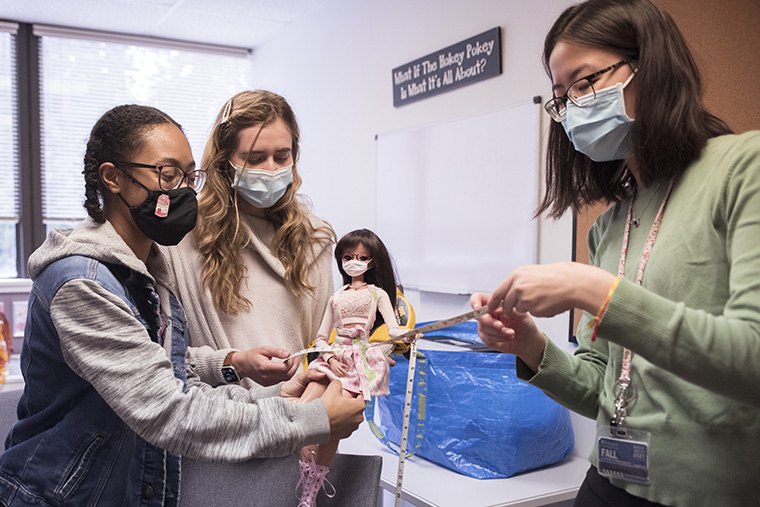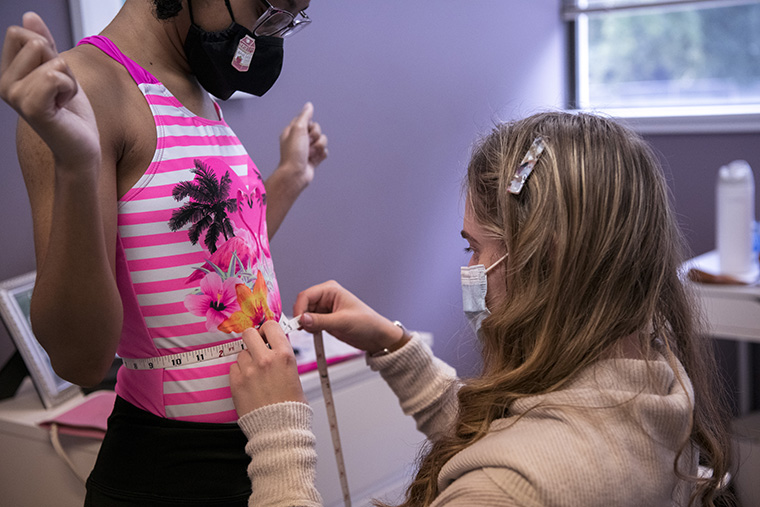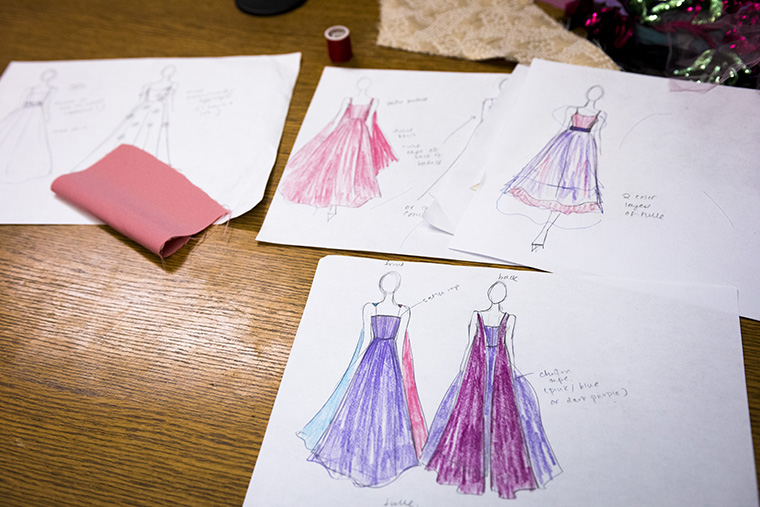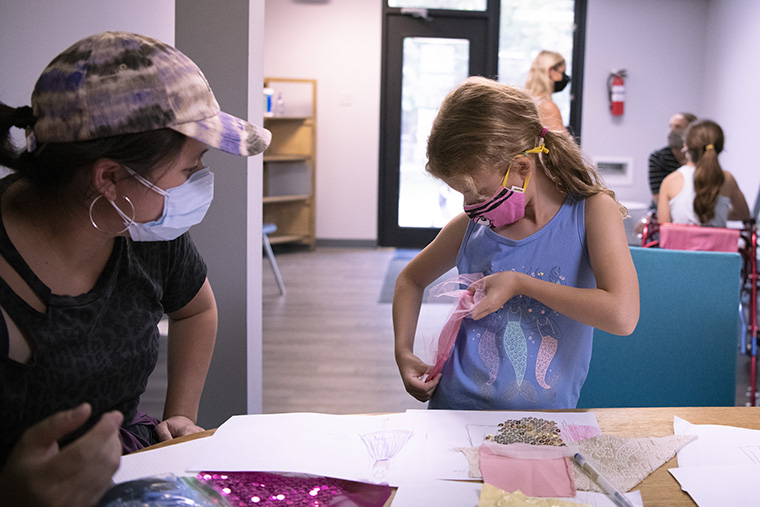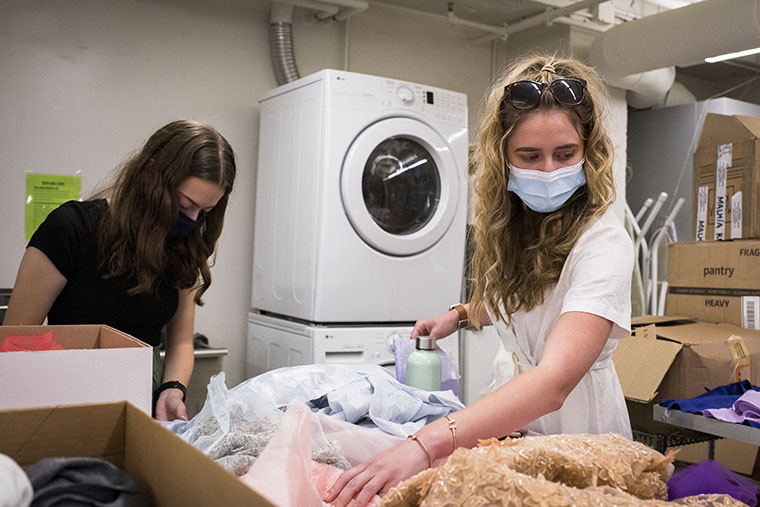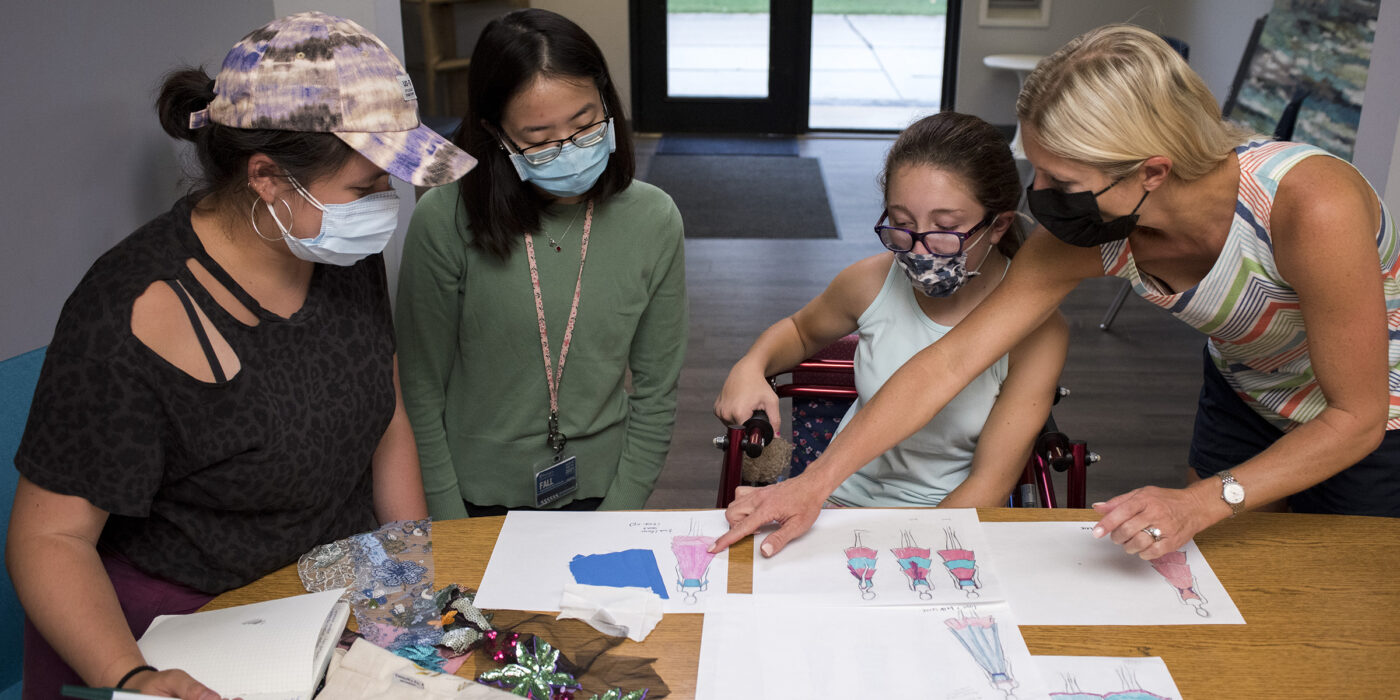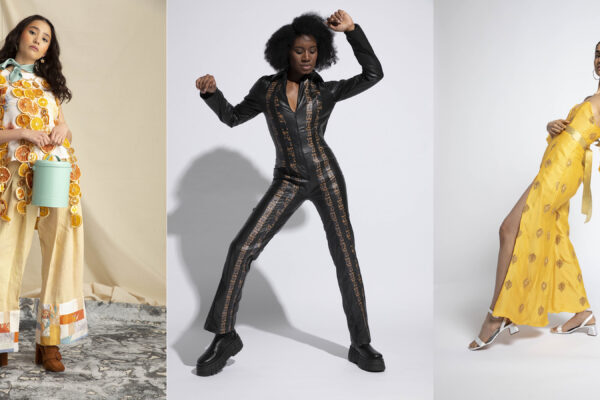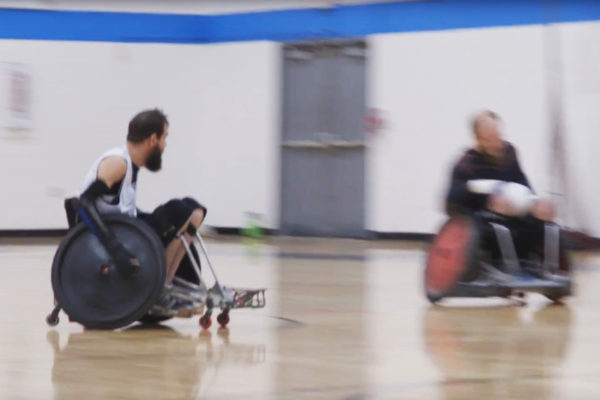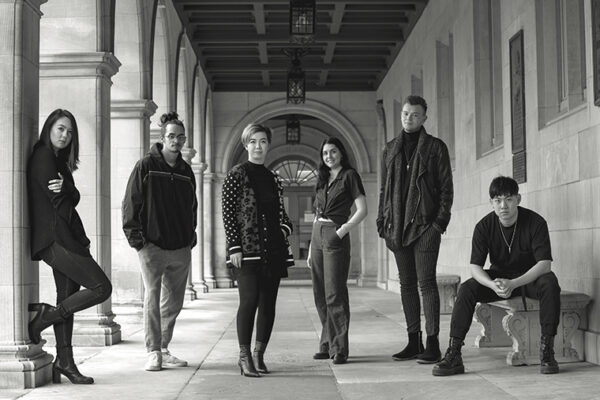Olivia likes pink and teal and purple in all tones, and the way satin and a knit-jersey feel on her skin but might like some tulle added to dress it up a bit. Anna likes black, white and gold, and also pinks and prints, and also likes the way satin and jersey feels, along with tulle, velvet and brocade for her look. Brian simply wants a gold suit, head to toe.
It’s fashion as it ought to be, fun and breezy and filled with aspiration and inspiration, even though the future models are on a midsummer Zoom call with student designers from Washington University in St. Louis. The WashU students, all undergraduate volunteers studying everything from fashion design to engineering to biology, are listening intently to Olivia and Anna and 15 other St. Louis-area kids with their parents.
It’s one of the first meetings of the Made to Model program, a yearlong campaign that will create clothing designed for students with disabilities who have difficulty dressing independently, or who may experience sensory sensitivities towards certain textures and materials. It’s clothing designed for people who may have difficulty wearing standard sizes and cuts.

“Our goal is to spread awareness about the importance of fashion for people of all abilities,” said Shelei Pan, a sophomore in Arts & Sciences and one of the catalysts for the Made to Model program. “And in turn, promote inclusivity and awareness.”
The culminating event will take place next spring in conjunction with the Sam Fox School of Design & Visual Arts’ annual fashion design showcase — the 93rd Annual Fashion Design Show on April 30, 2022. That’s when 17 young models from the St. Louis area, of various physical abilities and ranging in age from 8 to 20, will be wearing their new outfits designed by WashU students, walking on the same runway with the fashion models and demonstrating why adaptive fashion matters.
Inspired by a program called Runway of Dreams, a foundation that promotes inclusion, acceptance and opportunity in the fashion industry for people with disabilities, Made to Model at WashU is student-driven and student-run with community partners, faculty advisers, alumni designers and an alumna benefactor.
“It’s the WashU students’ program,” said Mary Ruppert-Stroescu, associate professor, designer and head of the fashion design program in the Sam Fox School. “I’m just happy to be along for the ride.”
Pan, a biology major in the neuroscience track, came up with the idea last spring and got her friends involved, including Maxine Roeder, a sophomore fashion design student in the Sam Fox School, and Miku Nambara, a sophomore in the McKelvey School of Engineering. Together, the three of them mapped out their plans and then went to work recruiting more friends and fellow students with a passion for fashion and community service.
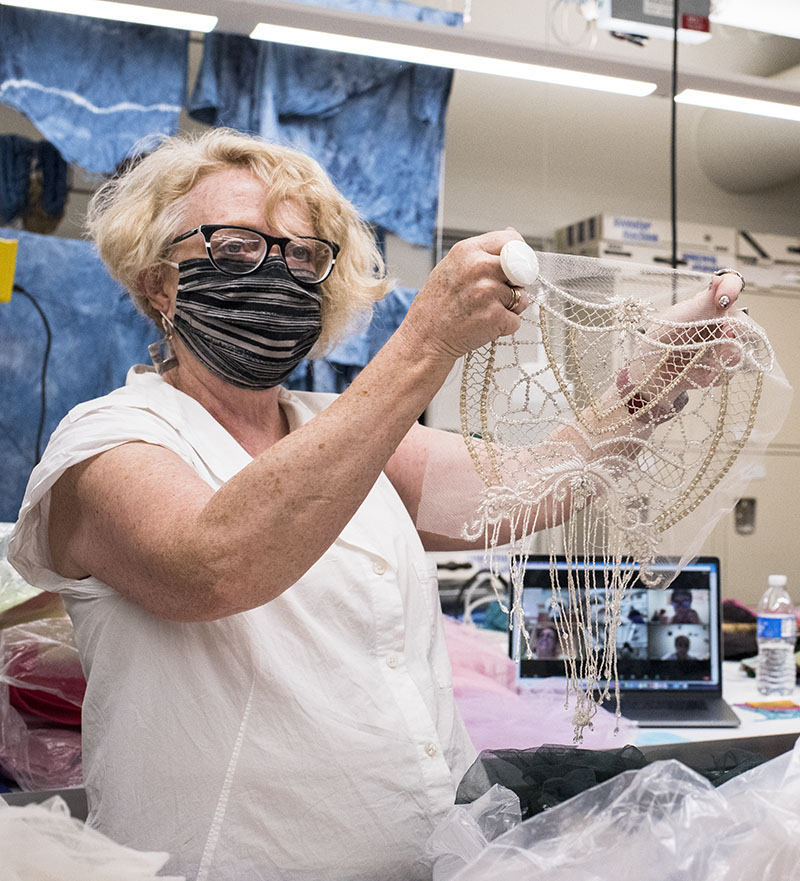
The seeds of inspiration
For Pan, who at the outset of the pandemic, took it upon herself to make masks for children, the inspiration came from a variety of sources, beginning with taking classes side-by-side with students from the Special School District of St. Louis from the time she was in kindergarten in the nearby Ladue School District. She recalls a conversation with a high school classmate who had trouble finding a homecoming dress.
“She told me she couldn’t wear her favorite dress because it wouldn’t fit with her walker,” Pan said. “I couldn’t imagine how uncomfortable she had to be. I realized there were a lot of kids who didn’t go to homecoming or prom because the fashion industry essentially ignores this.”
One of 150 high school students to receive a national Coca-Cola scholarship, Pan had also struck up a friendship late in her senior year of high school with a fellow Coca-Cola scholar named Cathryn Gray, a native of Atlanta who attends the University of Michigan. Gray has a mild form of cerebral palsy, and when Pan heard about Runway of Dreams, she reached out to her friend for advice. Gray gave an enthusiastic thumbs up.
“I remember when Tommy Hilfiger came out with their adaptive line, I was like, ‘Oh my gosh, there’s clothing for us,” Gray said. “I know what it’s like to be ostracized and feel self-conscious. We all want to wear comfortable, fashionable clothes and be in attendance at the big moments.
“And just like my everyday life, I want to be independent, I want to wear my own clothes.”
One thing leads to another
So Pan got to work, recruiting Nambara and Roeder, who recruited their friends and fellow students.
Ruppert-Stroescu, whose research explores wearable textile sensing systems for health and well-being, had taught classes focusing on adaptive fashion for wheelchair rugby athletes and taught classes that helped produce fashion for adults with cerebral palsy, was an enthusiastic supporter, as was Jennifer Ingram, a fashion design alum as an undergraduate and now senior lecturer in the Sam Fox School, who originated the idea for collaborative fashion projects at WashU.
The team made connections with community partners Variety, the Children’s Charity of St. Louis; KEEN (Kids Enjoy Exercise Now), and the Special School District of St. Louis. The Program in Occupational Therapy at the School of Medicine got involved, too, with OT students Taylor Church and Tiffany Wei coming on board. They, in turn, recruited Salma Bachelani, instructor in occupational therapy, to advise them.

“One of the first things we did from the OT side was to develop a survey for families to fill out to provide information on what their child’s needs would be in terms of accessibility,” Bachelani said. “Working as a team with the models through Zoom meetings has been a good way to get a feel for their personalities and try to include aspects of that into their designs.”
The students got a grant from CityStudioSTL in the spring of 2021 to help with start-up costs, and when Sam Fox School alumna and prominent fashion designer Paula Varsalona (BFA ’71) heard about the program, she got involved too, sending surplus materials and working with the students via Zoom as well from her New York studio. A community partnership grant from the Gephardt Institute for Civic and Community Engagement came early this semester.
It is what WashU does best: a multidisciplinary, creative community project hatched in a campus apartment, then taking off fast and furiously; a group of students who saw a need and decided to fill it.
By late September, the students were working with Varsalona on a Zoom call cutting swatches of material she had donated — chiffons and tulles, satins and sequins — with the knowledge of what their particular models were looking for. They went through reams of materials, layering textures and fabrics on top of one another. A few weeks later, the first individual meetings of designers and models — and their parents – began at Variety and KEEN, where measurements were taken, designs were shared and smiles were plenty.
All through the fall semester and into next, student designers will continue to work with the models to custom-design a dream dress or suit that will be modeled on the runway and then theirs to keep.
“Throughout the design process and leading up to the fashion show, we will have a team of students focused on adaptive fashion advocacy and education in the greater St. Louis community, with the goal of making adaptive fashion a permanent part of the St. Louis fashion scene,” Pan said.
“I’ve been impressed by the collaboration between the fashion design students and the occupational therapy students in developing strategies to ensure the participants have a voice in the design process,” Bachelani said. “I love the WashU students’ passion about making fashion more accessible to people that have different needs.”
